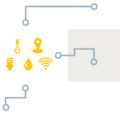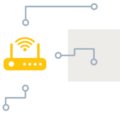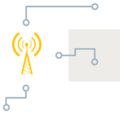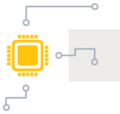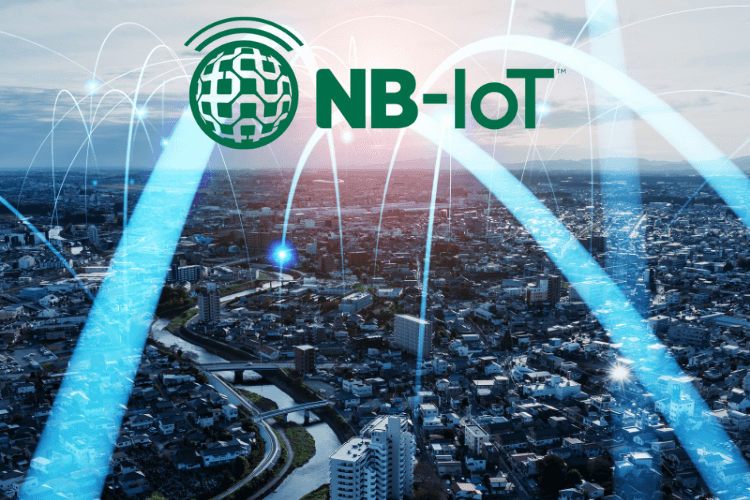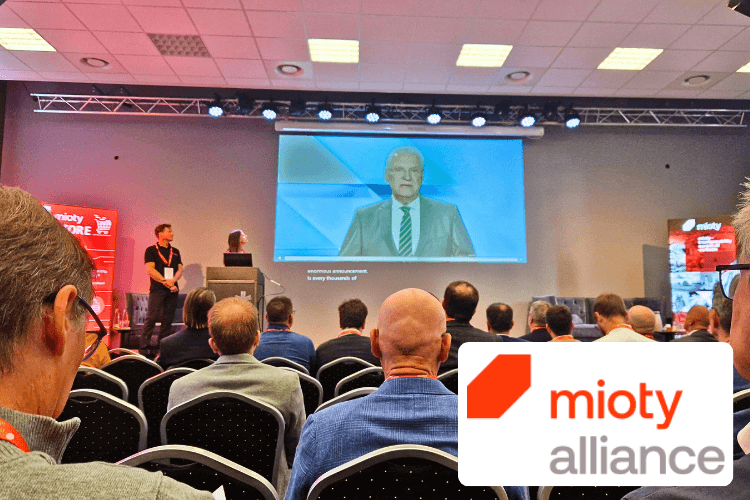All you need to know about LoRa® and LoRaWAN®

LoRa & LoRaWAN - perfect for IoT sensor networks
LoRaWAN stands for Long Range Wide Area Network and is a low-power wireless network protocol. It enables energy-efficient transmission of data over long distances. The LoRa wireless standard used was specially developed for the Internet of Things (IoT) and Industrial Internet of Things (IIoT). With LoRaWAN, several hundred sensors can be managed within a network and their sensor data processed. Depending on the application, sensors can be operated for up to 10 years without changing batteries, which significantly reduces maintenance costs. With LoRa and LoRaWAN, the data packets from the transmitter to the application server are always encrypted with AES to ensure secure transmission.
The secure, intelligent LoRaWAN infrastructure improves business processes and enables the digitization of many business models. The network is the basis for diverse applications in different market segments, including smart city, smart industry, smart building and smart farming. We have written a white paper specifically on the possibilities of LoRa and LoRaWAN as alternative radio solutions in the IoT and IIoT.
According to the LoRa Alliance, three-quarters of all IoT applications on the global IoT market are based on low-power wide-area network solutions, LPWAN for short, which also includes LoRaWAN or LoRa. In contrast, only about a quarter of IoT applications are based on high-bandwidth wireless technologies such as 5G (source: https://lora-alliance.org). This is also reflected in market growth: the market is estimated at around US$5.6 billion in 2023 and is expected to rise to over US$25 billion by 2028. This corresponds to average annual growth of more than 35% until 2028 (source: https://www.iotm2mcouncil.org).
More and more municipalities and cities are reporting that they have set up a so-called LoRaWAN network and want to develop into a "smart city". But what is behind this, which IoT applications are still suitable for LoRaWAN and why has it experienced such an upswing in recent years?
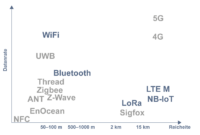
What is LoRa?
LoRa stands for Long Range and is a wireless data transmission method or radio technology.
It was originally developed by the semiconductor manufacturer Semtech and is characterized by a long range and economical energy consumption. In open areas, the range can be up to approx. 10 km and in urban areas up to approx. 3 km, depending on the conditions and possible obstacles on site. In addition, the signals also penetrate walls and reach into cellars, shafts and wells. LoRa is thus ideally suited for networking widely distributed sensors and actuators.
Frequency bands and data rates of LoRa
License-free frequency ranges are used for transmission. In Europe, for example, this is the 868 Mhz band. The advantage is that, unlike mobile communications, this frequency can be used free of charge if certain conditions are met, i.e., no charges are incurred.
When selecting LoRaWAN devices and sensors, attention must be paid accordingly to whether the respective device or sensor is designed for the location.
| Location | Frequency band |
|---|---|
| Europe | 433.05-434.79 MHz; 863-870 MHz |
| North America | 902-928 MHz |
| South America | 915 MHz |
| Pacific | 434 MHz |
| China | 470-510 MHz; 779-787 MHz; 920.5-924.5 MHz |
| India | 865-867 MHz |
| Australia | 915-928 MHz |
| Japan | 920-923 MHz |
However, in order not to overload the public frequencies, the data packets must not exceed 243 bytes in size. The data transmission rate is between 300 bit/s - 50 kBit/s and depends on the distance between the end device and the gateway. The closer the end device is to the gateway, the higher the data rate, the faster the data transmission and the lower the energy consumption. In addition, the permissible "time on air", i.e. the total duration of the transmission, must not be exceeded. This means that LoRa is not suitable for real-time applications, but it helps the battery in the sensors to last longer and is suitable for a wide range of IoT applications.
What is the difference between LoRa and LoRAWAN?
While LoRa refers to the radio standard, LoRaWAN stands for Long Range Wide Area Network and, alongside NB-IoT and LTE-M, is one of the LPWAN technologies. It describes the LoRa network and the open communication protocol of the same name. The protocol and the network architecture have the greatest influence on the battery life of a sensor, the network capacity, quality of service, security and variety of applications served by the network.
LoRaWAN targets the key requirements of IoT - Internet of Things such as secure bidirectional communication, localization and mobility of services. It also provides seamless collaboration of different systems and techniques among Smart Things without the need for rigid, local complex installations. Another advantage of LoRa is that the number of end devices that can be integrated is virtually unlimited. Once set up, a LoRaWAN network can be flexibly expanded at any time.
LoRaWAN is driven by the LoRa Alliance, a non-profit organization for the promotion and standardization of low-power wide-area network technologies. It was founded in 2015. Now with more than 500 members, including technology leaders such as IBM, Cisco, HP, Foxconn, Semtech and Sagemcom, the Alliance works closely together and shares experiences to promote and drive the success of the LoRaWAN® standard as the leading open global standard for secure IoT LPWAN connectivity.
Applications of LoRa and LoRaWAN
LoRa and LoRaWAN are suitable for a wide variety of IoT applications where rather small amounts of data are to be transmitted over long distances, but not in a real-time critical manner.
Typical applications often involve event-based reporting and/or "search & find". Measurement data acquisition & local "asset tracking" are big topics in IoT, e.g. a networked supply chain that works safely and reliably or container or area management, as well as energy and water supply, level monitoring of silos, containers and much more.
Common examples of IoT applications using LoRaWAN:
- Smart City: Demand-controlled street lighting, traffic light control or traffic measurement for traffic control, monitoring of waste containers for route optimization for disposal vehicles/garbage collection, parking space control via parking space sensors (smart parking).
- Smart metering: remote reading of electricity, water and gas meters, exchange of electricity consumption data with a utility/utility company
- Environmental monitoring: e.g. air quality monitoring, water level monitoring
- Logistics: asset tracking, i.e. use of GPS trackers to track loads, equipment or vehicles, container management/item tracking in defined areas
- Smart Farming: Monitoring of animals, barns and fields - from soil moisture sensors to temperature sensors for animals and barns
- IIoT/Industry 4.0: Condition monitoring of machines and systems, optimization of production processes
- Digital/Smart Health: e.g., alarms, hospital bed tracking.
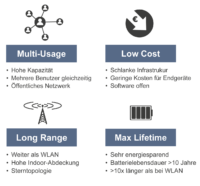
Advantages of LoRaWAN
One of the most important advantages of LoRaWAN is its cost-effectiveness: the infrastructure is lean, quickly implemented and scales well. The architecture of the IoT system is generally based on four components: End devices with LoRaWAN module, gateways for collecting and forwarding the data, a data cloud with IoT platform as backend, and applications for visualizing the data, controlling applications, etc.
In addition, the operating costs are very low as a result of the free data transmission and the high energy efficiency of the battery-powered end devices. Electricity is only consumed when sensors or actuators exchange time- or event-controlled data with the back end. Otherwise, the devices "sleep. In activity mode, in turn, only as much electrical power is used for the transmission signal as is required to reach the next gateway. Thanks to this economical energy consumption, battery runtimes of up to ten years and more are achieved. This also has a positive effect on maintenance: Only in the event of a malfunction, which is immediately recognizable when data exchange fails, and when the battery is replaced - the charge status is displayed in the back end - does a technician need to be on site.
LoRaWAN Security
In addition, LoRaWAN networks are very secure because LoRaWAN protocols use end-to-end encryption algorithms. The data is transmitted encrypted from the sensor to the final application. The security mechanism is based on the AES encryption algorithm using an IEEE-EUI64 identifier. A properly implemented encryption method, such as 128-bit AES encryption, provides a high level of security. The additional use of HTTPS and VPN further increases security.
You are currently viewing a placeholder content from YouTube. To access the actual content, click the button below. Please note that doing so will share data with third-party providers.
More InformationIn the IT & Tech podcast, Marius Nickolai, CEO of m2m Germany, explains the basics of LoRaWAN and gives an overview of the possible applications.
How is a LoraWAN network built?
A LoRaWAN network consists of at least the following components:
LoRaWAN sensors (nodes): The sensors send measured values in encrypted data packets to the LoRaWAN gateway via the LoRa wireless standard.
LoRaWAN gateway: The gateway receives data packets and forwards them to the LoRaWAN server using the LoRaWAN protocol.
LoRaWAN server: The LoRaWAN server contains the actual network in which the data is collected; the server serves as an interface to other services/databases, usually IoT platforms and applications.

Application Server: In order to be able to visualize and evaluate the data, appropriate applications are required. The application server or another service is used for this purpose. The data is forwarded to this from the LoRa server, where it is finally stored.
In a LoRaWAN, the network nodes are not assigned to a specific gateway. Instead, data from a node is typically received by several gateways that can be reached in the vicinity. Each gateway then forwards the received data packet to the network server via WLAN, mobile radio, Ethernet or satellite. Data transmission from the sensors to the application server is fully encrypted, which means it is very secure.

LoRaWAN products in the m2m IoT store
LoRaWAN sensors
LoRaWAN sensors for a wide range of applications from room climate to fill levels to weather stations, simply via Plug&Play.
LoRaWAN Gateways
In the m2m IoT store you will find industrial-grade LoRaWAN gateways for indoor and outdoor use.
LoRaWAN antennas
Antennas are the decisive component for the performance of the LoRaWAN network and its range and penetration.
LoRaWAN classes
LoRaWAN end devices serve a wide variety of purposes and differ in their requirements. LoRaWAN uses different device classes for this purpose. All classes allow bidirectional communication, i.e. they can both send and receive data.
In general, data is exchanged between the end device, usually a sensor, and the LoRaWAN gateway. A distinction is made between uplink and downlink. Uplink refers to sending the data from the end device to the gateway, whereas downlink refers to receiving the data from the gateway to the end device. In all classes, data can be sent to the gateway at any time. However, the downlink behavior, i.e. how data can be received from the gateway, differs depending on the class.
Class A terminals
LoRaWAN terminals available on the market must always comply with class A and are therefore the most widely used. They work according to the ALOHA method. This is a communication method in which a source sends data in so-called frames. If a frame arrives successfully at its destination, the next frame is sent. If there are collisions with other frames, the frame is sent again.
For class A devices, a LoRaWAN sensor sends data packets to the gateway, then two downlink receive windows open. During these receive windows, the sensor can receive data. Outside of these receive windows, no data can be received. The device is in a sleep mode during this time to save battery. A renewed downlink can only take place during a renewed upload.
Class B terminals
Class B end devices function like class A devices, but there are further defined downlink windows in addition to the two defined receive windows. To enable the end device to receive the downlink at the scheduled time and "wake up" from sleep mode, it receives a time-synchronized beacon (i.e., a very small data packet) from the gateway. As a result, the server knows when the end device is ready to receive.
Class C terminals
Class C terminals are ready to receive almost continuously, and accordingly also consume more energy than classes A and B. The receive windows are only closed during upload transmission.
We are LoRaWAN Full Service Provider
You want to measure CO2 values, monitor environmental factors? Implement smart energy management and metering? Or perhaps you are planning smart parking management or intelligent street lighting. Then it makes sense to work with a LoRaWAN full service provider to work together. m2m Germany GmbH supports and accompanies you throughout the entire process - from the sensor to the LoRaWAN Network Server to the application. From radio network planning to the implementation of your specific use case.
